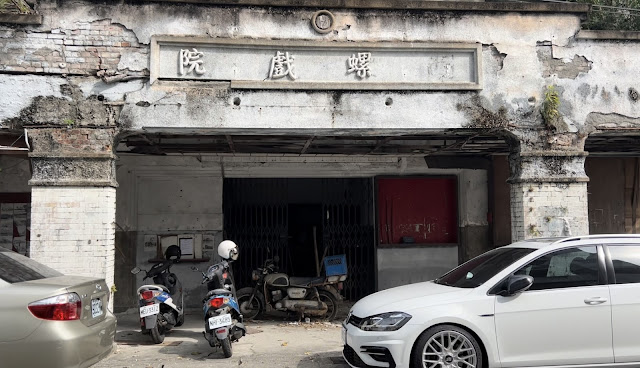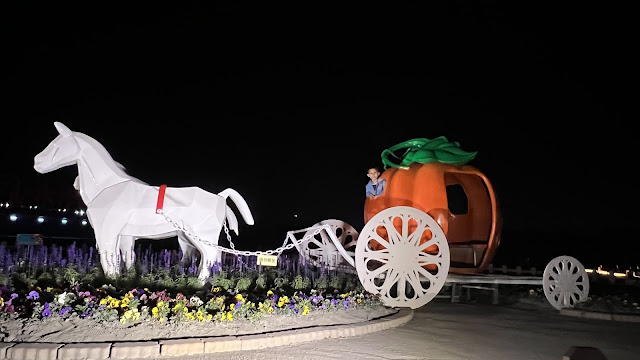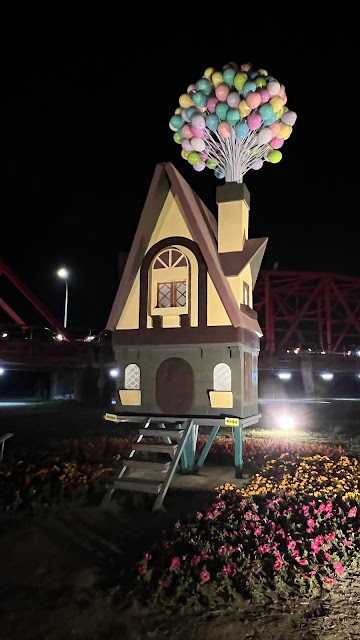Xiluo Old Street - Yanping Old Street (延平老街)
Xiluo Old Street, also known as Yanping Road, was a bustling market in early Taiwan, serving as a trading hub for rice, vegetables, and fruits, as well as a center for water and land transportation. Over 170 years ago, Xiluo Street was formed, and today, Yanping Road remains part of the core area of Xiluo Market Street. The Yanping Historic District encompasses Datong Road, Zhongxing Road, Xiuwen Road, Zhongshan Road, and Renhe Street.
Most of the ancient western-style buildings in Xiluo Old Street were constructed in the 1930s. During that time, the Japanese government promoted the construction of narrow-faced, single-room buildings, diverging from the traditional large-faced, wide-street courtyard structures. This architectural fashion influenced Taiwanese craftsmen under Japanese rule, and Yanping Road became a representative example of street house architecture during that era.
The buildings on Xiluo Yanping Old Street and Douliu Taiping Old Street belong to the same period. They feature Baroque-style architecture introduced during the Japanese occupation, with a history of over 60 years. Most of these two- or three-story buildings are constructed using mold printing, stone washing, and veneering bricks. The parapet walls with various shapes on the front of each house are the most striking features of these buildings.
Check out my YouTube video
Xiluo East Market (西螺東市場)
Xiluo East Market, a traditional market with a history tracing back to the Qing Dynasty, used to be located near the ferry station in Zhuoshui River. Over time, a market gradually developed in the back streets of the city. The market building itself was constructed in the 1950s using leftover wood from the construction of Xiluo Bridge. The reinforced concrete section was completed in 1965. Due to the shift of the business district, the market experienced a decline. The East Market faced demolition disputes, but in 2007, the Luoyang Cultural and Educational Foundation initiated the "Revitalization of Stores in Xiluo Historic District and Reconstruction of Old Houses," which led to the preservation of the East Market. The restoration work was completed in 2011, and it was registered as a historic building in Yunlin County in 2010.
See also: Xiluo Soy Sauce Factory
Xiluo Fuxing Palace (西螺福興宮)
Xiluo Fuxing Palace is a temple that enshrines Mazu. Its origin dates back to 1717 when Minghai, a monk from Yongquan Temple in Fujian, came to Taiwan and enshrined the statue of Mazu from Meizhou, building a temple in Xiluo. In 1770, the old temple was demolished, and a new temple was relocated to the main street with the agreement of Xiluo officials. In 1800, renovations were made, expanding the temple's scale to two entrances, which were completed in 1874. Fuxing Palace is the first stop for Dajia Mazu to rest upon entering Yunlin, and it is the only temple where Dajia Mazu will drive back and forth.
Xiluo Theatre (西螺大戲院)
Xiluo Theatre has been known to me for some time, although I have never visited it myself. We visit Xiluo every year, but it was our first time exploring this theater. The Yunlin County government designated the theater as a heritage property in 2001, but its future remains uncertain. The theater is privately owned by the Lin family. Completed sometime between 1937 and 1940, this reinforced concrete and brick building replaced a wooden theater that was originally built in the 1920s. The new theater survived the war unscathed and flourished during the golden age of Taiwanese cinema in the 1950s. However, business declined in the early 1980s, and the theater was abandoned in 1988. Besides film screenings, Xiluo Theater hosted traditional puppet shows, opera troupes, concerts, and other performances, with a seating capacity of over 500 people. Nowadays, the theater is in ruins, and it is not possible to enter unless one is willing to brave a dilapidated structure. You can find a significant number of indoor pictures of this theater on the website spectralcodex.com
Xiluo Bridge (西螺大橋)
Xiluo Bridge is decorated each year during the Lunar New Year, attracting visitors to the park surrounding the bridge.































0 komentarze:
Post a Comment